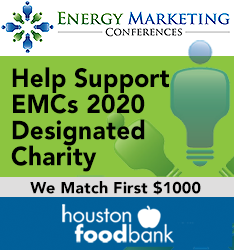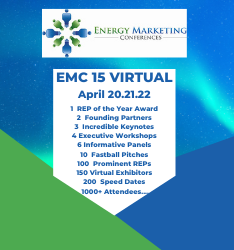|
|
|
|
|
New York DPS Staff Proposes Mechanisms To Increase Number Of Customers Receiving Utility Low-Income Assistance (Prohibited From ESCO Service)
The following story is brought free of charge to readers by EC Infosystems, the exclusive EDI provider of EnergyChoiceMatters.com
Staff of the New York Department of Public Service has issued a whitepaper report on New York State's energy affordability policy (EAP) that includes recommendations to increase the number of customers participating in utility low-income assistance program
The PSC has prohibited ESCOs from serving "utility low-income assistance program participants [APP]," which generally means any customers participating in a ratepayer-subsidized utility assistance program. Certain ESCOs, which had sought permission after the PSC's APP order, may continue to serve APP customers under a PSC-approved guaranteed savings program
Additionally, Staff's proposals would also result in more frequent and refreshed data on customer eligibility for utility EAP programs, meaning ESCOs could more frequently see their existing customers no longer be eligible for ESCO service.
Even without any change to the income level or other qualifications for EAP programs, Staff's whitepaper notes that it is likely not all currently EAP-eligible customers are currently enrolled in an EAP program, and the whitepaper recommends changes so that more currently eligible customers are placed into EAP programs
Staff notes that the major utilities are providing discounts to approximately 923,000 electric and gas only low-income customers. There may be some natural gas only low-income customers served by the combination electric and gas companies, but for comparison purposes, Staff makes a simple assumption that those customers likely have electric service provided by another major utility. For the 2019-2020 program year, the New York State Office of Temporary Disability Assistance (OTDA) reported that 1,476,769 New York households received a non-emergency HEAP benefit.
"Staff believes the gap between the two data points is likely caused by the following reasons: electric municipal customers are not included; some low-income customers may pay for electric service in rent; not all heating fuels are captured by the OTDA file matching process; and, the file matching process between OTDA and the utilities is otherwise imperfect," Staff said
While Staff proposes various changes to the current matching process used to determine EAP customer eligibility, Staff also believes self-reporting of customer eligibility may serve as a "stop gap" until other changes are made
"Low-income customers have an opportunity to identify themselves as eligible to participate in utility low-income energy affordability programs if they provide documentation that they are beneficiaries in other public assistance programs. Customers can fax, telephone, email, or regular first-class mail documentation to the utilities. While there is not a statewide process for customer self-identification for low-income energy affordability programs, the utilities will enroll customers who participate in various public assistance programs after the documentation, such as an award letter, is verified," the whitepaper states
"Because many of the issues with identifying low-income customers are related to the OTDA systems, a customer self-identification process can be a stop gap approach to increase customer enrollment into the low-income energy affordability programs. Under this interim approach, customers who are recipients of other public assistance programs would provide documentation of their participation in one of those programs to qualify for enrollment in utility energy affordability programs," the whitepaper states
"Staff considers customer self-identification a useful stop gap tool to further increase enrollment in the utilities’ low-income energy affordability programs while OTDA continues to enhance its file match processes and systems. However, the long-term approach should be to steer low-income customers to OTDA or local SSD offices so that each low-income customer receives the maximum benefits in one location," the whitepaper states
"With respect to establishing a customer self-identification process for qualifying customers to participate in utility energy affordability programs, Staff recommends the utilities develop a uniform statewide approach for customer self-identification. The utilities should collectively work with OTDA to develop a verification process in their next file match to ensure the self-identified customer was income eligible for public assistance programs by OTDA," Staff said
However, on a long-term basis, "Staff believes the most efficient means to enroll low-income customers in the utility EAP is the file matching process with either the OTDA or the City HRA administers income-based programs."
"The current OTDA file match with the utilities verifies the participant’s address, social security number, utility or fuel company, income, and identity. This process is efficient and also provides the best protection for customer related personal data," Staff noted
"[W]hile the success rate of matching low-income participants has improved, Staff believes that are [sic] several opportunities to improve the file matching process that can lead to further significant increases in EAP enrollments, such as adding additional programs which should be coordinated by the Low-Income Energy Task Force. For example, there are instances where the shared data doesn’t match the utility records, which lead to eligible customers not being matched in the utilities’ systems for enrollment in the EAP. While a utility account number leaves little room for variations in abbreviations or spelling as other matching data may, the OTDA form only collects the utility account number for the company that receives the HEAP payment. Thus, in the cases where that company is not the utility, this matching field is not available to the utility. Further, it is Staff’s understanding that if HEAP closes because funds have been exhausted, an income eligible customer that would have otherwise received assistance is not be enrolled in the HEAP program and, therefore, would not be on the OTDA file for the utility to match, in spite of their income-eligible status. On this point, Staff recommends the inclusion of all utility account numbers on all OTDA public assistance program applications as a standard variable to match as a means to identify income eligible customers that were denied HEAP benefits due to program funding limitations. While these changes would likely improve the utility qualified customer identification process and likely increase EAP enrollments, Staff recognizes they will require system and process changes by OTDA which may not be immediately feasible. If the additional account information becomes available to the utilities for the purpose of matching participants, protection and security of such information should be a top priority for the utilities," the whitepaper states
"A more frequent OTDA file match would capture changes in low-income participants, either coming onto the program or being removed from the program. Consideration should also be given to expand the file match in utility service territories to at least twice a year. By doing so, additional eligible customers could be enrolled in utility low-income energy affordability programs with greater frequency instead of one opportunity on an annual basis. To track the effectiveness of the file matching process, Staff recommends the utilities report annually on how many of the low-income participants in the file were not able to be matched, as well as the estimated number of total HEAP recipients served by the OTDA in their respective service territories. The utilities will have to coordinate with OTDA in their annual updates and should identify any assumptions. This information would be important for all stakeholders to understand of how the programs are operating," the whitepaper states
Staff's whitepaper also discussed the potential for the use of the customer's enrollment in another public assistance program as making a customer eligible for the EAP programs
"The inclusion of other public assistance programs into the OTDA file match system may extend the benefits of affordability programs to a greater number of the state’s low-income population. OTDA would need to conduct an analysis to determine the modifications it would have to undertake to accommodate the additional programs with an assessment of the transition and future operational costs and impact on administrative resources. The expansion of OTDA’s file match system will require coordination with other agencies and utilities which should be addressed by the Low-Income Energy Task Force as envisioned by the Commission in Phase One of this proceeding. The Low-Income Energy Task Force was established to address low-income energy affordability policies and programs, improve coordination between government and private agencies, and streamline and eliminate duplication of services and programs to increase effectiveness and reduce costs," the whitepaper said
"In a subsequent phase of this proceeding an assessment should be undertaken to review the OTDA file matching process to streamline the exchange of information in order to increase the completion of the HEAP recipient information to facilitate increased low-income energy affordability program enrollment.67 OTDA’s file match should also be examined to consider the development of a process, such as a code to automatically identify customers as HEAP income eligible but denied a benefit due to lack of federal funding, for enrollment in the utilities’ low-income energy affordability programs. In the interim, low-income customers can share such denial notices for lack of funding as verification of income eligibility for enrollment in the utilities’ low-income energy affordability programs until a specific code can be included in the OTDA file match," the whitepaper states
Case 14-M-0565
ADVERTISEMENT Copyright 2010-21 Energy Choice Matters. If you wish to share this story, please
email or post the website link; unauthorized copying, retransmission, or republication
prohibited.
February 5, 2021
Email This Story
Copyright 2010-21 EnergyChoiceMatters.com
Reporting by Paul Ring • ring@energychoicematters.com
NEW Jobs on RetailEnergyJobs.com:
• NEW! -- Wholesale Originator -- Retail Supplier -- Houston
• NEW! -- Trading Analyst -- Retail Supplier
• NEW! -- Renewables Trader -- Retail Supplier
• NEW! -- Channel Partner Sales Manager -- Retail Supplier
• NEW! -- Experienced Retail Energy Account Manager
• NEW! -- Sales Channel Manager -- Retail Supplier
• NEW! -- Retail Energy Account Executive -- Texas
• Supply and Pricing Analyst -- Retail Supplier -- DFW
• Lead Data Analyst
-- Retail Supplier
• Senior Energy Pricing Analyst
• Senior Energy Advisor
• IT Billing Project Manager
• IT Billing Business Analyst
• Financial Analyst -- Retail Supplier -- DFW
|
|
|
|










